Fuzzy Logic Regional Landslide Susceptibility Multi-Field Information Map Representation Analysis Method Constrained by Spatial Characteristics of Mining Factors in Mining Areas
Abstract
1. Introduction
2. Research Data
2.1. Study Area
2.2. Data Resource
2.3. Selection Method of Landslide Susceptibility Evaluation Factors
2.3.1. Qualitative and Quantitative Methods
- Inheritance: relevant experience in selecting impact factors in previous studies.
- Scientific: selecting the disaster factors that play a key role in the occurrence of landslide disasters to make the selection of factors more scientific and reasonable.
- Independence: when selecting evaluation factors, influence factors with low correlation and high independence should be selected to avoid the overlapping and crossing of factors.
- Practicality: the selected evaluation factors should be meaningful, easy to obtain and process, and concise and maneuverable. One should also be able to collect data corresponding to these factors and standardize and quantify them for performing statistical analyses.
2.3.2. Pearson’s Correlation Coefficient
2.4. Influencing Factors and Quantitative Classification of Landslides in Mining Areas
2.4.1. Profile Curvature
2.4.2. Land Use
2.4.3. Terrain Classification Index for Lowlands (TCI_Low)
2.4.4. Slope Position
2.4.5. NDVI
2.4.6. Mining Subsidence
2.4.7. The Melton Coefficient
2.4.8. Road
2.4.9. Topographic Wetness Index (TWI)
2.4.10. Fault
2.4.11. Slope
2.4.12. Slope Shape Type
2.4.13. The Disturbance in Goaf
2.4.14. Flow Path Length
2.4.15. Collapse Density
2.4.16. Slope Structure
2.4.17. Slope Aspect
2.4.18. Flow Width
3. Methodology
3.1. Fuzzy Logic Model of Mining Area Factor Constraints
Quantitative Description of Spatial Characteristics and Laws of Landslide Disaster Environmental Factors
3.2. Fuzzy Logic Theory
3.2.1. Constructing the Membership Function of Environmental Factors of Landslide Hazards in the Study Area
3.2.2. Membership Function Type and Construction Basis of Evaluation Factors
3.2.3. Landslide Susceptibility Fuzzy Set Hierarchical Superposition Based on Mining Factor Constraints
3.3. Information Model
3.4. Support Vector Machine Model
4. Results and Discussion
4.1. Susceptibility Mapping Analysis
4.2. Evaluation of Model Accuracy and Comparative Analysis of Model Results
4.2.1. ROC Curve
4.2.2. Spatial Accuracy Analysis
5. Conclusions
Author Contributions
Funding
Institutional Review Board Statement
Informed Consent Statement
Data Availability Statement
Conflicts of Interest
References
- Xu, S.L. Study on Dynamic Landslide Susceptibility Mapping Based on Multi-Source Remote Sensing Imagery. Ph.D. Thesis, China University of Geosciences, Wuhan, China, 2018. [Google Scholar]
- Yang, D.; Qiu, H.; Ma, S.; Liu, Z.; Du, C.; Zhu, Y.; Cao, M. Slow surface subsidence and its impact on shallow loess landslides in a coal mining area. Catena 2022, 209, 105830. [Google Scholar] [CrossRef]
- Jiang, S.; Li, J.; Zhang, S.; Gu, Q.; Lu, C.; Liu, H. Landslide risk prediction by using GBRT algorithm: Application of artificial intelligence in disaster prevention of energy mining. Process Saf. Environ. Prot. 2022, 166, 384–392. [Google Scholar] [CrossRef]
- Montgomery, D.R.; Dietrich, W.E. A physically based model for the topographic control on shallow landsliding. Water Resour. Res. 1994, 30, 1153–1171. [Google Scholar] [CrossRef]
- Pack, R.T.; Tarboton, D.G.; Goodwin, C.N. The SINMAP Approach to Terrain Stability Mapping. In Proceedings of the 8th Congress of the International Association of Engineering Geology, Vancouver, BC, Canada, 21–25 September 1998; Available online: https://digitalcommons.usu.edu/cee_facpub/2583 (accessed on 21 September 1998).
- Pal, S.C.; Chowdhuri, I. GIS-based spatial prediction of landslide susceptibility using frequency ratio model of Lachung River basin, North Sikkim, India. SN Appl. Sci. 2019, 1, 416. [Google Scholar] [CrossRef]
- Chowdhuri, I.; Pal, S.C.; Chakrabortty, R.; Malik, S.; Das, B.; Roy, P. Torrential rainfall-induced landslide susceptibility assessment using machine learning and statistical methods of eastern Himalaya. Nat. Hazards 2021, 107, 697–722. [Google Scholar] [CrossRef]
- Tian, C.S.; Liu, X.L.; Wang, J. Geohazard susceptibility assessment based on CF model and logistic regression models in Guangdong. Hydrogeol. Eng. Geol. 2016, 43, 154–161. [Google Scholar] [CrossRef]
- Ruidas, D.; Chakrabortty, R.; Islam, A.R.M.T.; Saha, A.; Pal, S.C. A novel hybrid of meta-optimization approach for flash flood-susceptibility assessment in a monsoon-dominated watershed, Eastern India. Environ. Earth Sci. 2022, 81, 145. [Google Scholar] [CrossRef]
- Ruidas, D.; Pal, S.C.; Islam, A.R.M.T.; Saha, A. Characterization of groundwater potential zones in water-scarce hardrock regions using data driven model. Environ. Earth Sci. 2021, 80, 809. [Google Scholar] [CrossRef]
- Su, Q.; Zhang, J.; Zhao, S.; Wang, L.; Liu, J.; Guo, J. Comparative Assessment of Three Nonlinear Approaches for Landslide Susceptibility Mapping in a Coal Mine Area. ISPRS Int. J. Geo-Inf. 2017, 6, 228. [Google Scholar] [CrossRef]
- Zhang, L.; Huang, M.; Li, M.; Lu, S.; Yuan, X.; Li, J. Experimental Study on Evolution of Fracture Network and Permeability Characteristics of Bituminous Coal Under Repeated Mining Effect. Nat. Resour. Res. 2021, 31, 463–486. [Google Scholar] [CrossRef]
- Zhou, G.; Song, B.; Liang, P.; Xu, J.; Yue, T. Voids Filling of DEM with Multiattention Generative Adversarial Network Model. Remote Sens. 2022, 14, 1206. [Google Scholar] [CrossRef]
- Li, J.; Lin, Y.; Nguyen, X.; Zhuang, X.; Li, B.; Querol, X.; Moreno, N.; Cordoba, P. Enrichment of strategic metals in the Upper Triassic coal from the Nui Hong open pit mine, Thai Nguyen Coalfield, NE Vietnam. Ore Geol. Rev. 2023, 153, 105301. [Google Scholar] [CrossRef]
- Chen, W.; Peng, J.; Hong, H.; Shahabi, H.; Pradhan, B.; Liu, J.; Zhu, A.-X.; Pei, X.; Duan, Z. Landslide susceptibility modelling using GIS-based machine learning techniques for Chongren County, Jiangxi Province, China. Sci. Total Environ. 2018, 626, 1121–1135. [Google Scholar] [CrossRef]
- Guo, Z.; Shi, Y.; Huang, F.; Fan, X.; Huang, J. Landslide susceptibility zonation method based on C5.0 decision tree and K-means cluster algorithms to improve the efficiency of risk management. Geosci. Front. 2021, 12, 101249. [Google Scholar] [CrossRef]
- Zhou, G.; Deng, R.; Zhou, X.; Long, S.; Li, W.; Lin, G.; Li, X. Gaussian Inflection Point Selection for LiDAR Hidden Echo Signal Decomposition. IEEE Geosci. Remote Sens. Lett. 2021, 19, 6502705. [Google Scholar] [CrossRef]
- Zhang, Y.; Luo, J.; Li, J.; Mao, D.; Zhang, Y.; Huang, Y.; Yang, J. Fast Inverse-Scattering Reconstruction for Airborne High-Squint Radar Imagery Based on Doppler Centroid Compensation. IEEE Trans. Geosci. Remote Sens. 2021, 60, 5205517. [Google Scholar] [CrossRef]
- Tobler, W.R. A Computer Movie Simulating Urban Growth in the Detroit Region. Econ. Geogr. 1970, 46, 234–240. [Google Scholar] [CrossRef]
- Van Westen, C.J.; Rengers, N.; Terlien, M.T.J.; Soeters, R. Prediction of the occurrence of slope instability phenomenal through GIS-based hazard zonation. Int. J. Earth Sci. 1997, 86, 404–414. [Google Scholar] [CrossRef]
- Chen, W.; Chai, H.; Zhao, Z.; Wang, Q.; Hong, H. Landslide susceptibility mapping based on GIS and support vector machine models for the Qianyang County, China. Environ. Earth Sci. 2016, 75, 474. [Google Scholar] [CrossRef]
- Su, Q.; Zhao, S.; Guo, J. Numerical modeling and classification of surface landslide hazard Susceptibility in Huoxi Coal Mine. J. Geo-Inf. Sci. 2017, 19, 1613–1622. [Google Scholar] [CrossRef]
- Zadeh, L.A. Fuzzy sets. Inf. Control 1965, 8, 338–353. [Google Scholar] [CrossRef]
- Vapnik, V.; Levin, E.; Le Cun, Y. Measuring the VC-Dimension of a Learning Machine. Neural Comput. 1994, 6, 851–876. [Google Scholar] [CrossRef]
- Huang, F.; Yin, K.; Jiang, S.; Huang, J.; Cao, Z. Landslide susceptibility evaluation based on cluster analysis and support vector machine. J. Rock Mech. Eng. 2018, 37, 156–167. [Google Scholar] [CrossRef]
- Dan, L.; Fengbao, Y.; Hong, W.; Dawei, L.; Xiaofeng, H. Vegetation classification method based on C5. 0 decision tree with multiple classifiers. Acta Graph. Sin. 2017, 38, 722–728. [Google Scholar] [CrossRef]
- Stanley, T.; Kirschbaum, D.B. A heuristic approach to global landslide susceptibility mapping. Nat. Hazards 2017, 87, 145–164. [Google Scholar] [CrossRef]
- Moayedi, H.; Mehrabi, M.; Mosallanezhad, M.; Rashid, A.S.A.; Pradhan, B. Modification of landslide susceptibility mapping using optimized PSO-ANN technique. Eng. Comput. 2019, 35, 967–984. [Google Scholar] [CrossRef]
- Pourghasemi, H.R.; Yansari, Z.T.; Panagos, P.; Pradhan, B. Analysis and evaluation of landslide susceptibility: A review on articles published during 2005–2016 (periods of 2005–2012 and 2013–2016). Arab. J. Geosci. 2018, 11, 193. [Google Scholar] [CrossRef]
- Fang, Z.; Wang, Y.; Peng, L.; Hong, H. A comparative study of heterogeneous ensemble-learning techniques for landslide susceptibility mapping. Int. J. Geogr. Inf. Sci. 2020, 35, 321–347. [Google Scholar] [CrossRef]

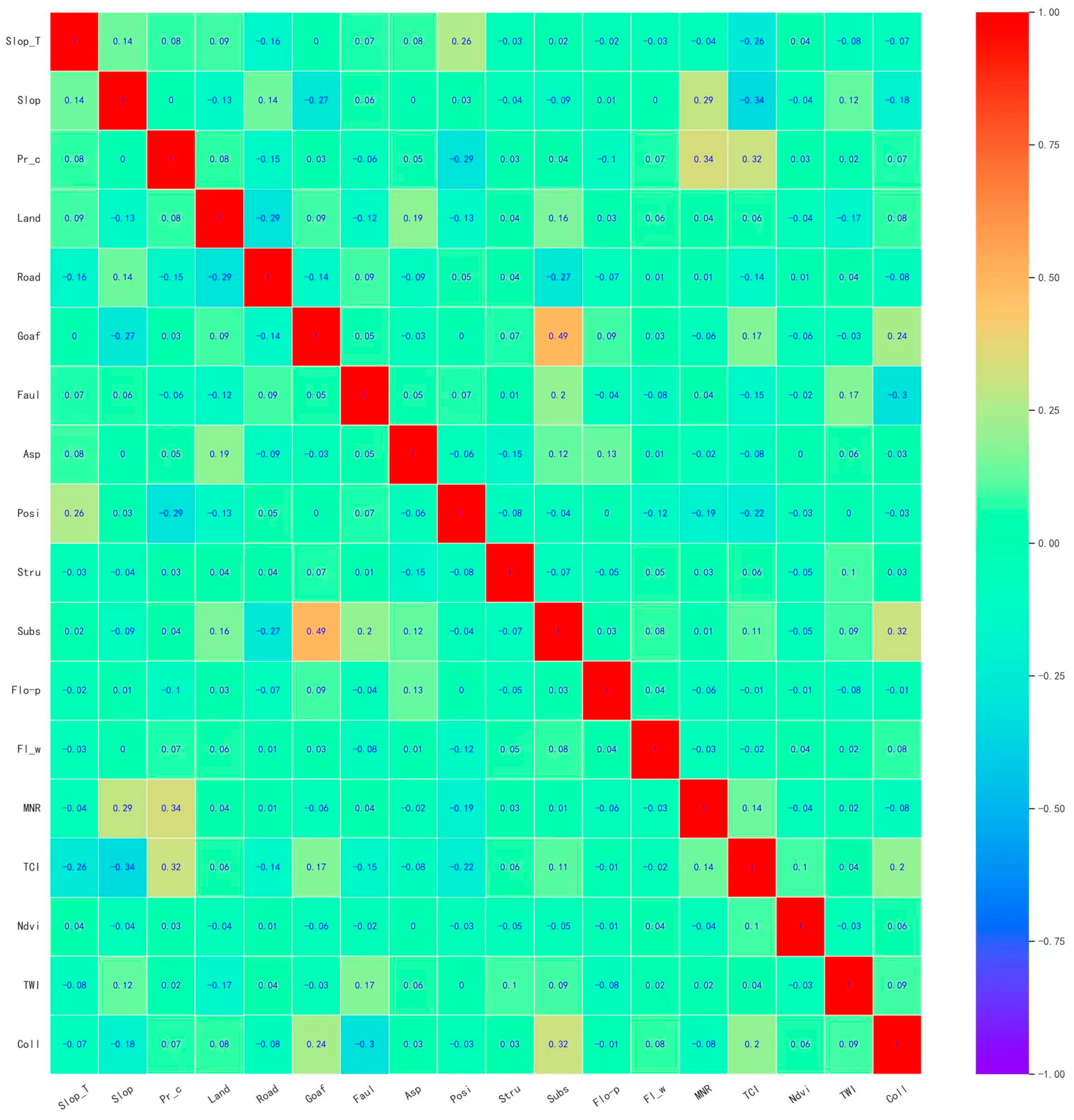
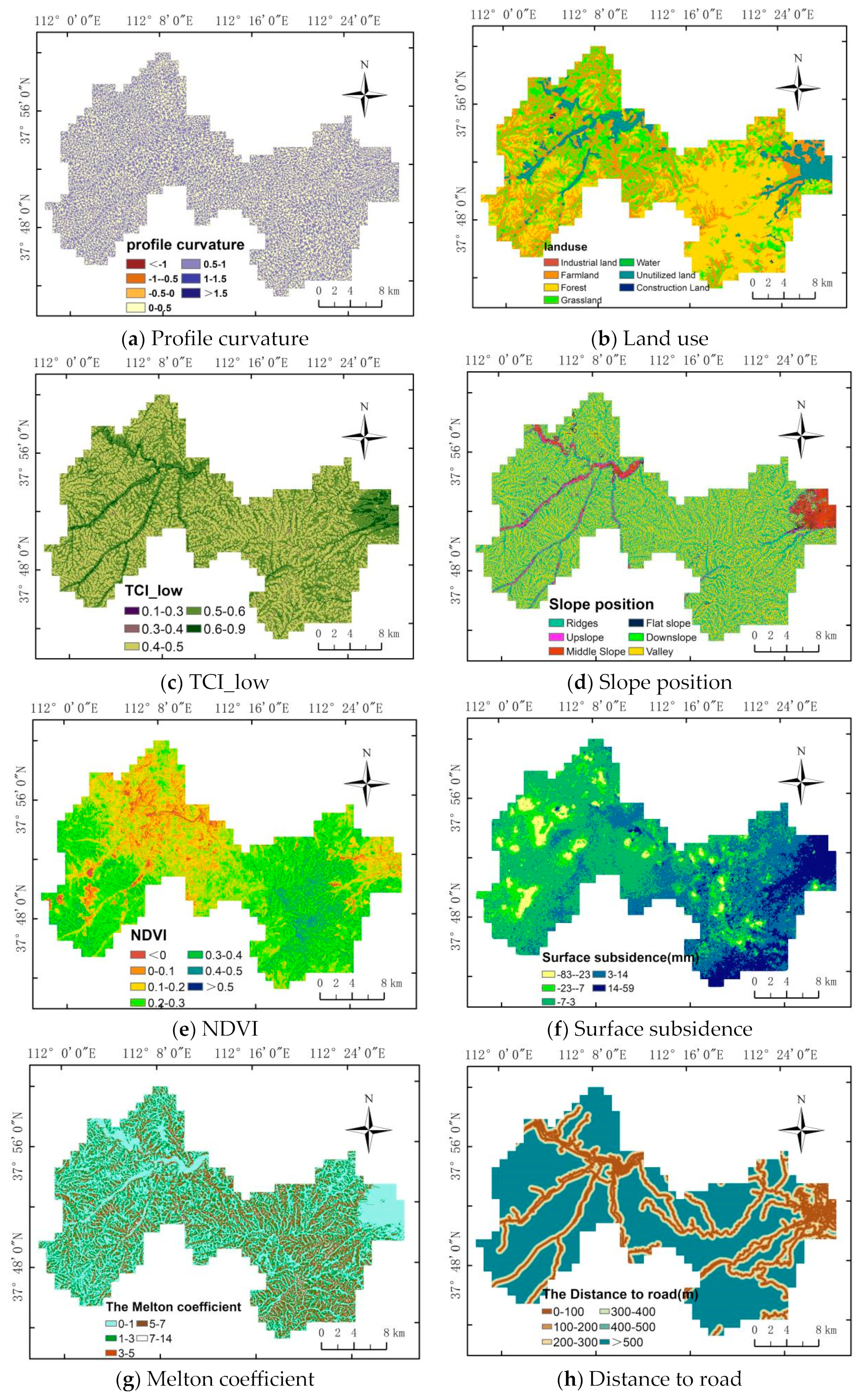
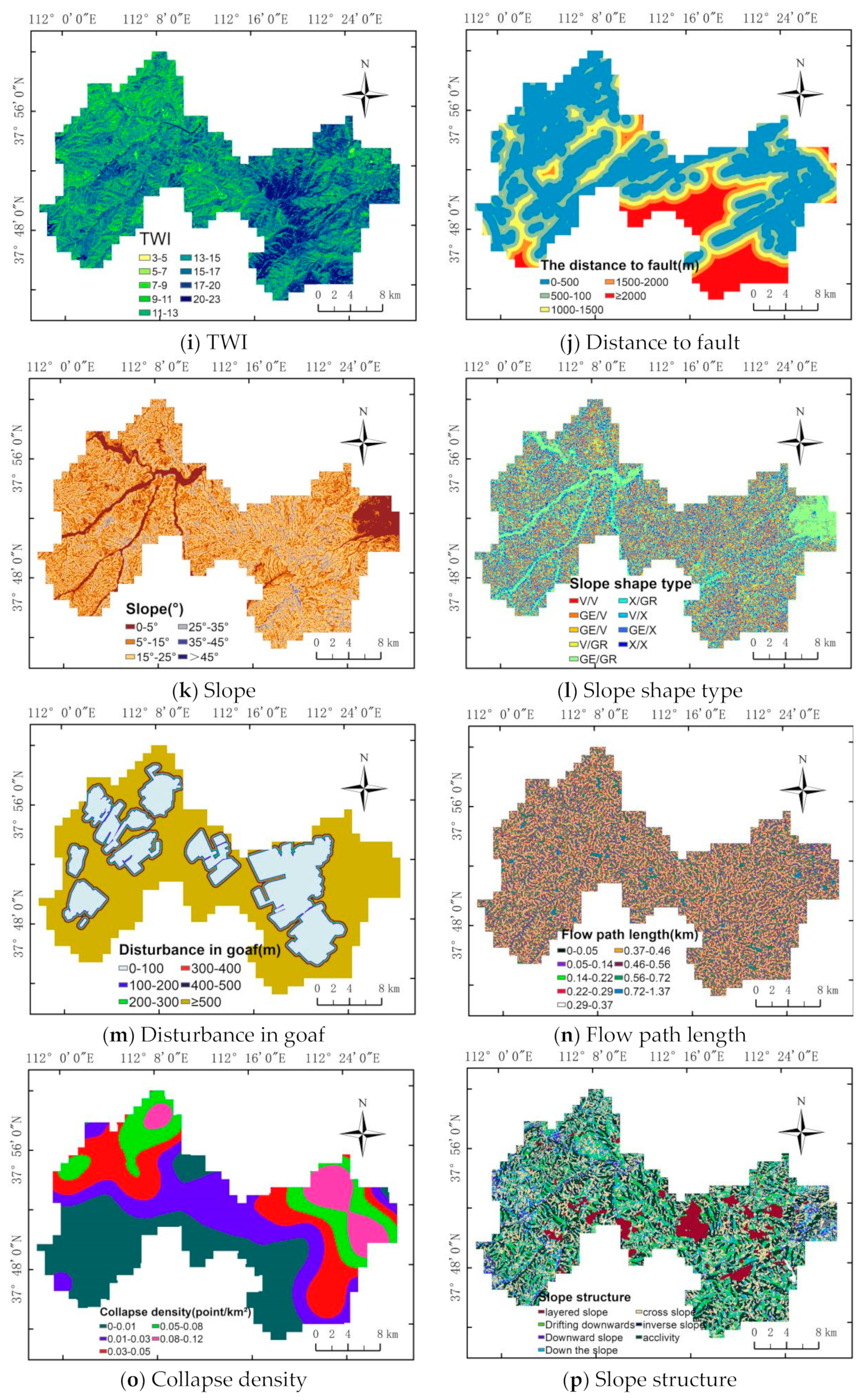
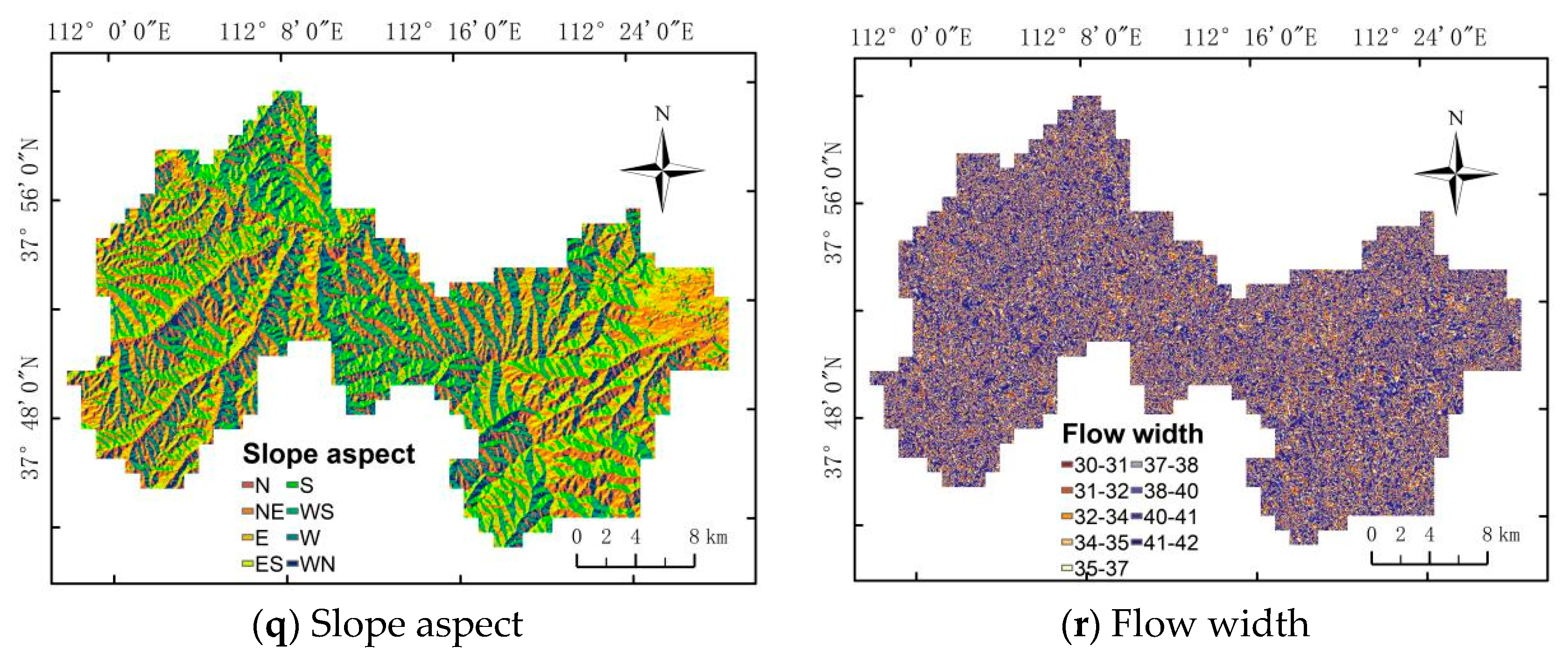
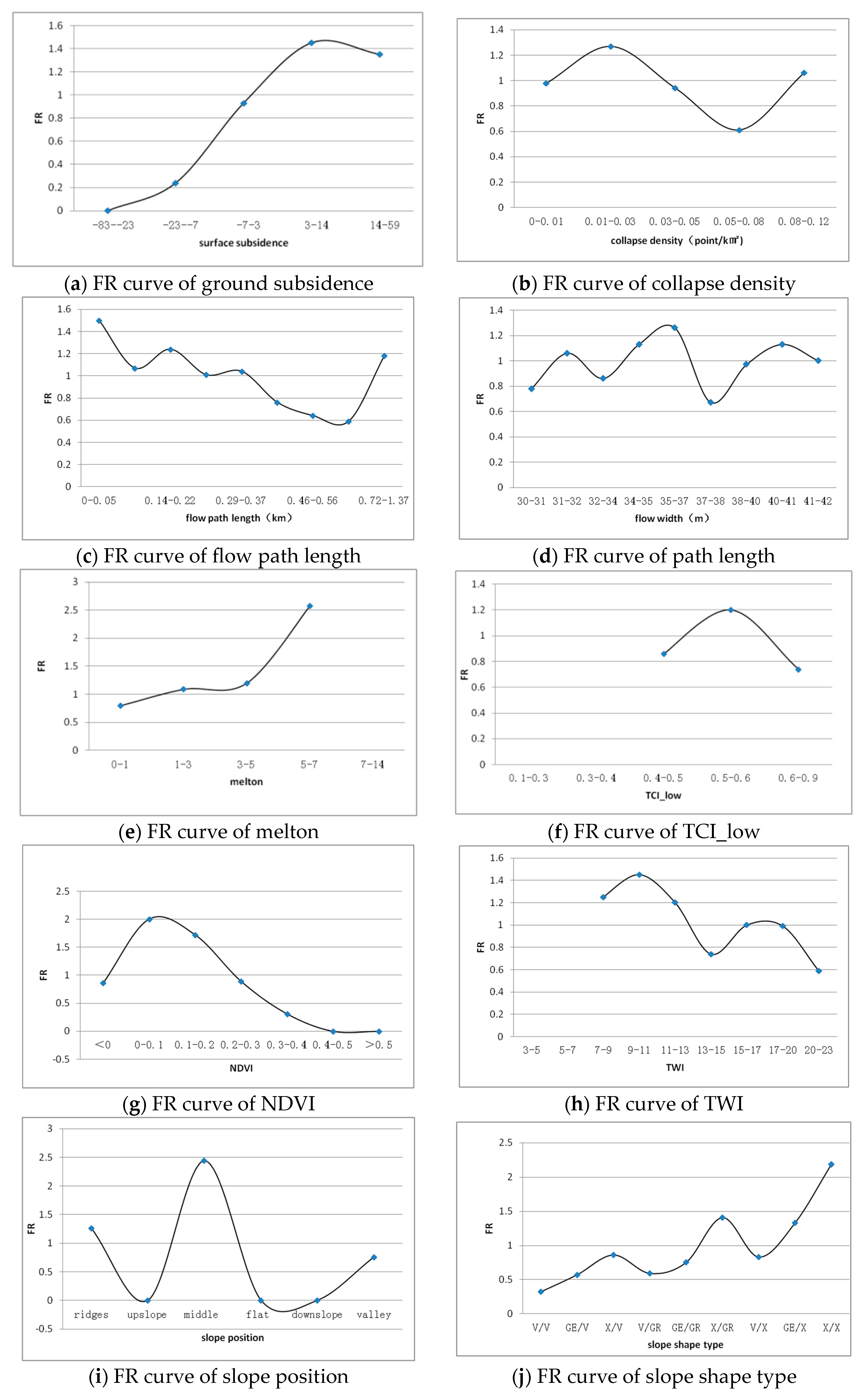

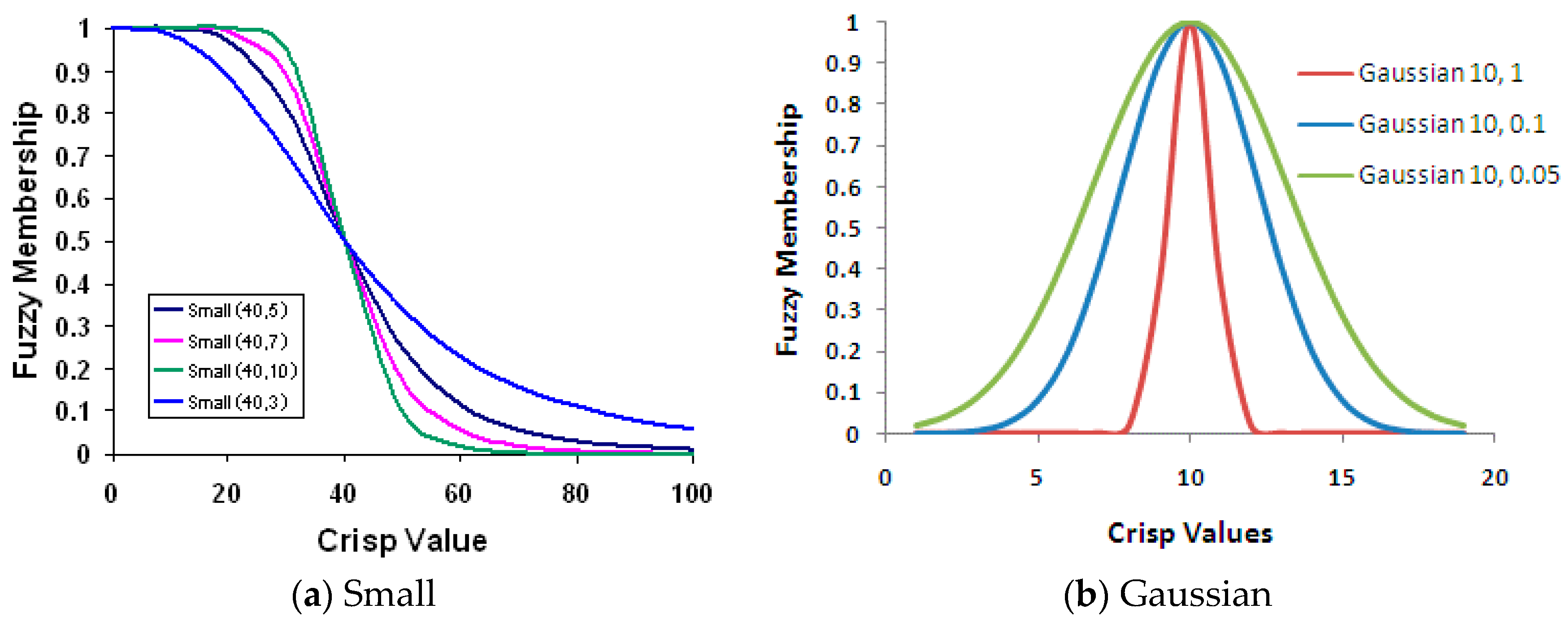


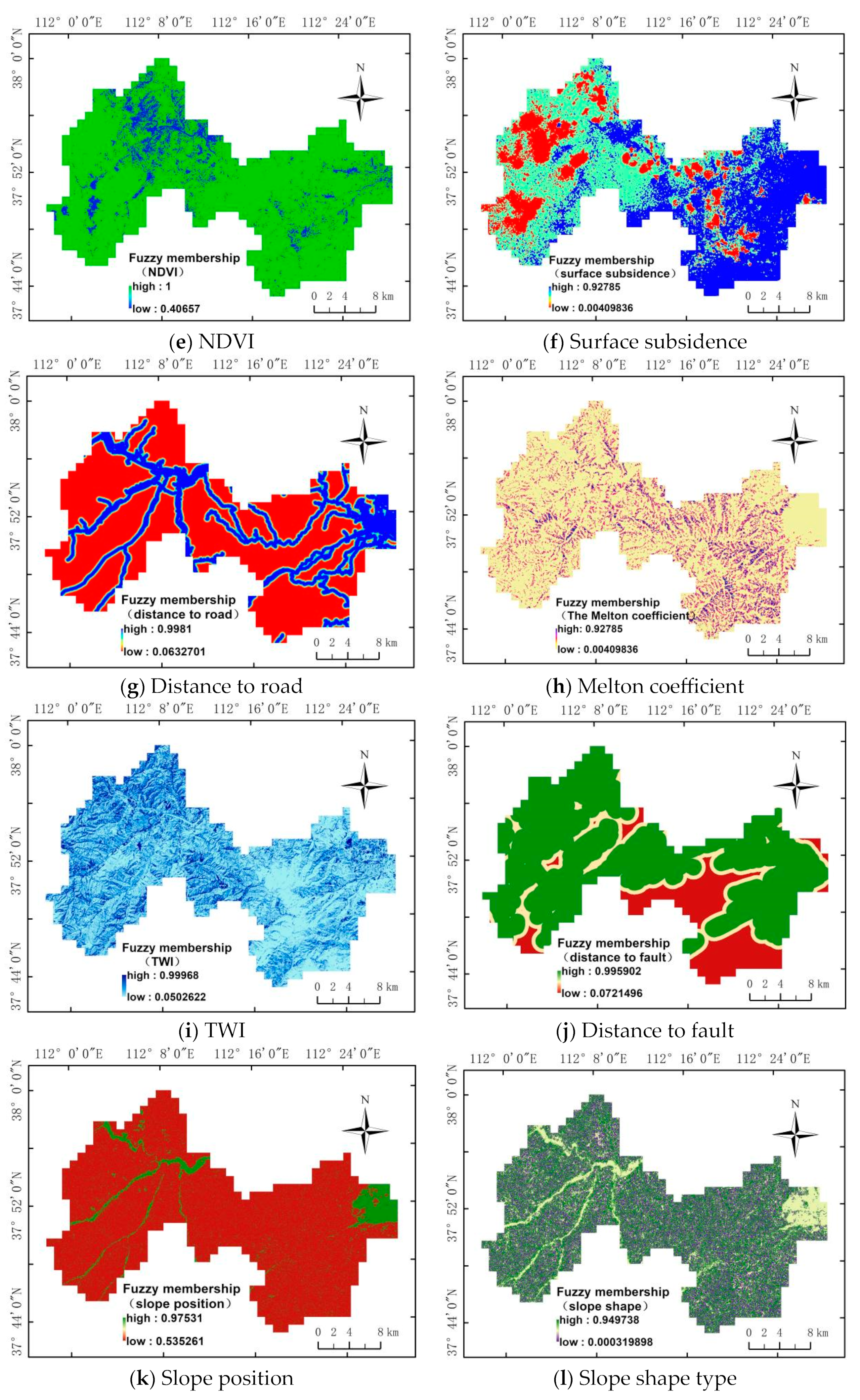

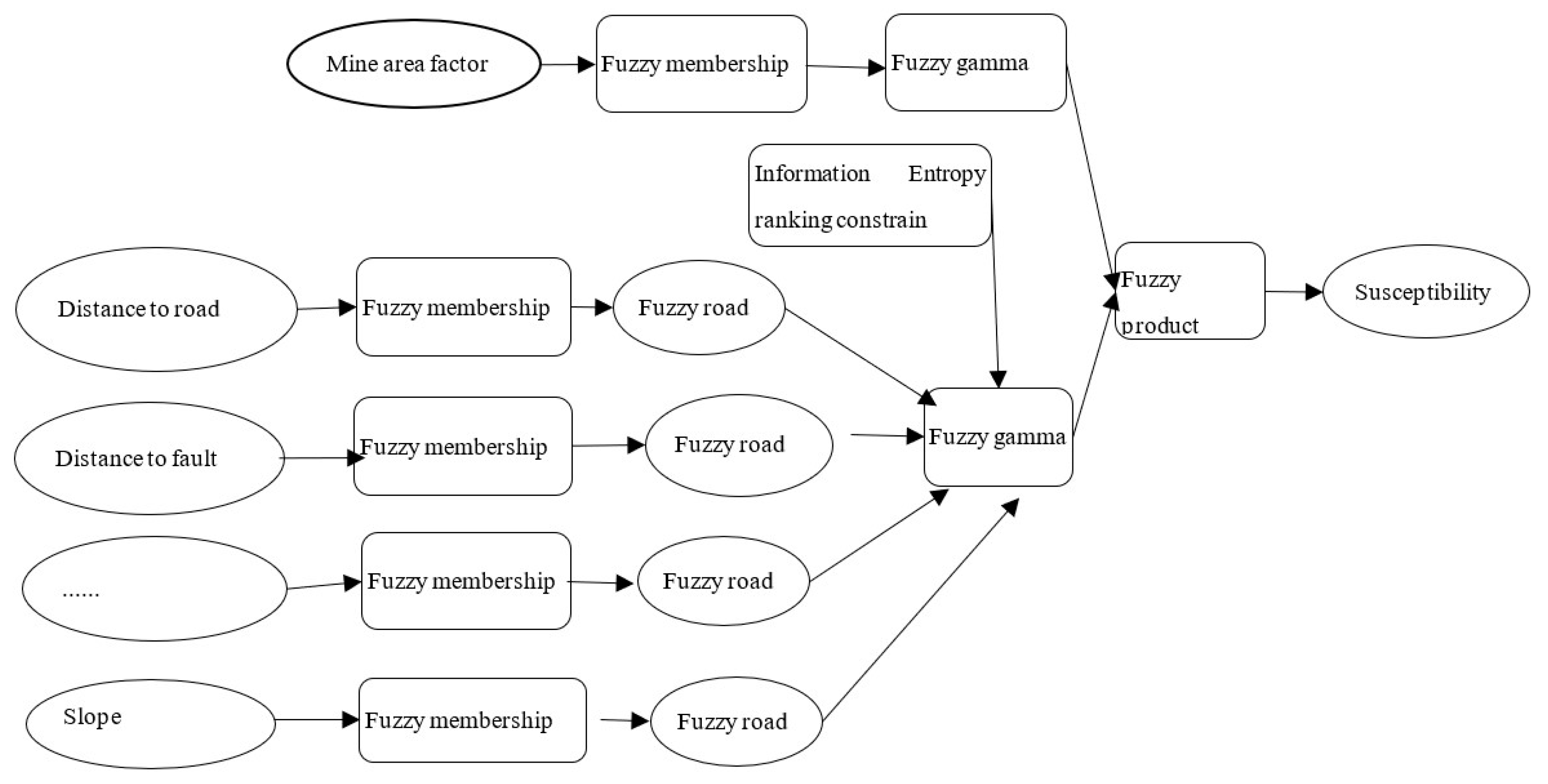
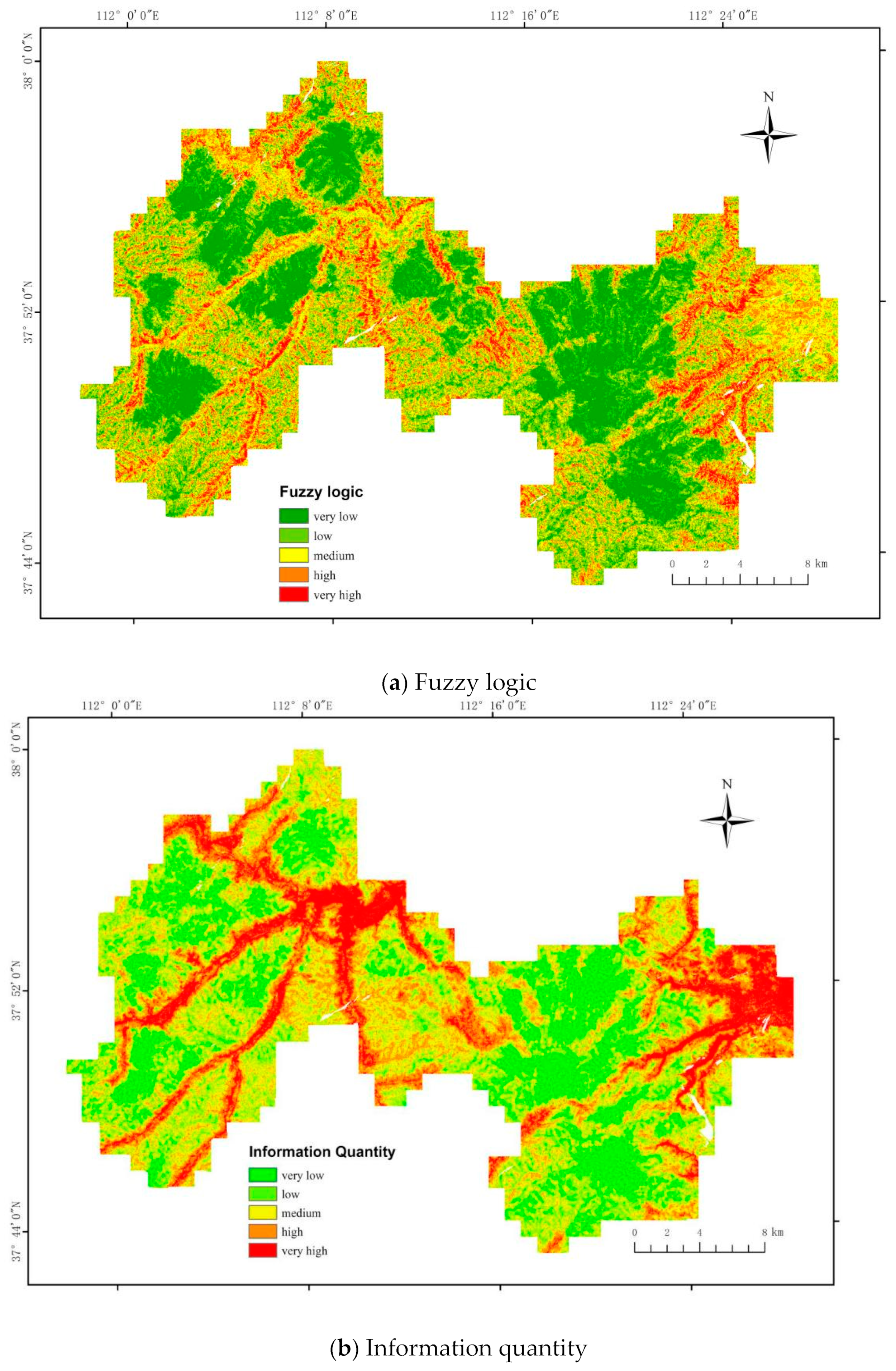


| Data Name | Data Source | Type | Precision |
|---|---|---|---|
| Historical Landslides | Shanxi Provincial Geological Hazard Environmental Monitoring Center | Data table | Point Data (scale) |
| DEM | Homemade | Raster | 5 m |
| Geological data | Geological drawings of Xishan Coal and Electricity Geology Office | Vector | 1:50,000 |
| Land use | Provided by the National Natural Science Foundation of China project team | Raster | 30 m |
| Satellite imagery | Drone | Raster | 0.5 m |
| Annual rainfall | National Meteorological Science Data Center | Data table | 30 m |
| Rivers | Paper map of Xishan Coal and Electricity Geology Office | Vector | 1:50,000 |
| Road | Paper map of Xishan Coal Point Geology Office | Vector | 1:50,000 |
| Fault | Paper drawing of Xishan Coalfield Geology Office | Vector | 1:10,000 |
| Mining area | Paper drawing of Xishan Coalfield Geology Office | Vector | 1:10,000 |
| Boundary of the study area | Paper drawing of Xishan Coalfield Geology Office | Vector | 1:5000 |
| Seismic data | Shanxi Seismological Bureau | Data sheet or grid | 25 m |
| Various indices | Geospatial data cloud satellite imagery raster | Raster | 30 m |
| Stratigraphic lithology | Paper drawings of Xishan Coalfield Geology Office | Vector | 1:50,000 |
| Groundwater level | Paper drawing of Hydrology Department of Xishan Coal and Electricity Geology Office | Vector | 1:50,000 |
| Water-bearing rock formation | Paper drawings of the hydrology department of the Xishan Coal and Power Geology | Vector | 1:50,000 |
| Slop_T | Slop | Pr_c | Land | Road | Goaf | Faul | Asp | Posi | Stru | Subs | Flo-p | Fl_w | MNR | TCI | Ndvi | TWI | Coll | |
|---|---|---|---|---|---|---|---|---|---|---|---|---|---|---|---|---|---|---|
| Slop_T | 1.00 | |||||||||||||||||
| Slop | 0.14 | 1.00 | ||||||||||||||||
| Pr_c | 0.08 | 0.00 | 1.00 | |||||||||||||||
| Land | 0.09 | −0.13 | 0.08 | 1.00 | ||||||||||||||
| Road | −0.16 | 0.14 | −0.15 | −0.29 | 1.00 | |||||||||||||
| Goaf | 0.00 | −0.27 | 0.03 | 0.09 | −0.14 | 1.00 | ||||||||||||
| Faul | 0.07 | 0.06 | −0.06 | −0.12 | 0.09 | 0.05 | 1.00 | |||||||||||
| Asp | 0.08 | 0.00 | 0.05 | 0.19 | −0.09 | −0.03 | 0.05 | 1.00 | ||||||||||
| Posi | 0.26 | 0.03 | −0.29 | −0.13 | 0.05 | 0.00 | 0.07 | −0.06 | 1.00 | |||||||||
| Stru | −0.03 | −0.04 | 0.03 | 0.04 | 0.04 | 0.07 | 0.01 | −0.15 | −0.08 | 1.00 | ||||||||
| Subs | 0.02 | −0.09 | 0.04 | 0.16 | −0.27 | 0.49 | 0.20 | 0.12 | −0.04 | −0.07 | 1.00 | |||||||
| Flo-p | −0.02 | 0.01 | −0.10 | 0.03 | −0.07 | 0.09 | −0.04 | 0.13 | 0.00 | −0.05 | 0.03 | 1.00 | ||||||
| Fl_w | −0.03 | 0.00 | 0.07 | 0.06 | 0.01 | 0.03 | −0.08 | 0.01 | −0.12 | 0.05 | 0.08 | 0.04 | 1.00 | |||||
| MNR | −0.04 | 0.29 | 0.34 | 0.04 | 0.01 | −0.06 | 0.04 | −0.02 | −0.19 | 0.03 | 0.01 | −0.06 | −0.03 | 1.00 | ||||
| TCI | −0.26 | −0.34 | 0.32 | 0.06 | −0.14 | 0.17 | −0.15 | −0.08 | −0.22 | 0.06 | 0.11 | −0.01 | −0.02 | 0.14 | 1.00 | |||
| Ndvi | 0.04 | −0.04 | 0.03 | −0.04 | 0.01 | −0.06 | −0.02 | 0.00 | −0.03 | −0.05 | −0.05 | −0.01 | 0.04 | −0.04 | 0.10 | 1.00 | ||
| TWI | −0.08 | 0.12 | 0.02 | −0.17 | 0.04 | −0.03 | 0.17 | 0.06 | 0.00 | 0.10 | 0.09 | −0.08 | 0.02 | 0.02 | 0.04 | −0.03 | 1.00 | |
| Coll | −0.07 | −0.18 | 0.07 | 0.08 | −0.08 | 0.24 | −0.30 | 0.03 | −0.03 | 0.03 | 0.32 | −0.01 | 0.08 | −0.08 | 0.20 | 0.06 | 0.09 | 1.00 |
| Conditional Factor | Classification (Ki) | FR | Information Entropy | Entropy Weight | Geologic Ranking |
|---|---|---|---|---|---|
| Slope | 0°–5° | 0.4 | 0.93 | 0.024 | 11 |
| 5°–15° | 1.06 | ||||
| 15°–25° | 1.1 | ||||
| 25°–35° | 1.06 | ||||
| 35°–45° | 2.13 | ||||
| 45°–90° | 0 | ||||
| Slope shape type | V/V | 0.32 | 0.937 | 0.021 | 12 |
| GE/V | 0.57 | ||||
| X/V | 0.86 | ||||
| V/GR | 0.59 | ||||
| GE/GR | 0.75 | ||||
| X/GR | 1.41 | ||||
| V/X | 0.83 | ||||
| GE/X | 1.33 | ||||
| X/X | 2.19 | ||||
| Disturbance in goaf | 0–100 | 0.25 | 0.95 | 0.017 | 13 |
| 100–200 | 0.81 | ||||
| 200–300 | 0.83 | ||||
| 300–400 | 0.78 | ||||
| 400–500 | 1.87 | ||||
| ≥500 | 1.37 | ||||
| Profile curve | <−1 | 0 | 0.774 | 0.075 | 6 |
| −1–0.5 | 0 | ||||
| −0.5–0 | 0 | ||||
| 0–0.5 | 1.47 | ||||
| 0.5–1.0 | 0.58 | ||||
| 1.0–1.5 | 1.67 | ||||
| >1.5 | 0 | ||||
| Land use | Industrial land | 0 | 0.647 | 0.119 | 3 |
| Farmland | 1.01 | ||||
| Forest | 0.41 | ||||
| Grassland | 0.77 | ||||
| Water | 4.82 | ||||
| Construction land | 3.95 | ||||
| Unutilized land | 0 | ||||
| Aspect (°) | N | 1.2 | 0.991 | 0.003 | 16 |
| NE | 0.77 | ||||
| E | 0.88 | ||||
| ES | 1.12 | ||||
| S | 1.23 | ||||
| WS | 0.92 | ||||
| WS | 0.76 | ||||
| WN | 1.16 | ||||
| Slope position | Ridges | 1.26 | 0.552 | 0.152 | 2 |
| Unslope | 0 | ||||
| Middle slope | 2.44 | ||||
| Flat slope | 0 | ||||
| Downslope | 0 | ||||
| Valley | 0.76 | ||||
| Ground subsidence (mm/year) | −83–23 | 0 | 0.520 | 0.162 | 1 |
| −23–7 | 0.24 | ||||
| −7–3 | 0.93 | ||||
| 3–14 | 1.45 | ||||
| 14–59 | 1.35 | ||||
| Collaspe density (point/km2) | 0–0.01 | 0.98 | 0.984 | 0.005 | 15 |
| 0.01–0.03 | 1.27 | ||||
| 0.03–0.05 | 0.94 | ||||
| 0.05–0.08 | 0.61 | ||||
| 0.08–0.12 | 1.06 | ||||
| Flow path length | 0–0.05 | 1.5 | 0.982 | 0.006 | 14 |
| 0.05–0.14 | 1.07 | ||||
| 0.14–0.22 | 1.24 | ||||
| 0.22–0.29 | 1.01 | ||||
| 0.29–0.37 | 1.04 | ||||
| 0.37–0.46 | 0.76 | ||||
| 0.46–0.56 | 0.64 | ||||
| 0.56–0.72 | 0.59 | ||||
| 0.72–1.37 | 1.18 | ||||
| Flow width | 30–31 | 0.78 | 0.992 | 0.002 | 17 |
| 31–32 | 1.06 | ||||
| 32–34 | 0.86 | ||||
| 34–35 | 1.13 | ||||
| 35–37 | 1.26 | ||||
| 37–38 | 0.67 | ||||
| 38–40 | 0.97 | ||||
| 40–41 | 1.13 | ||||
| 41–42 | 1 | ||||
| Distance to fault | 0–500 | 0.85 | 0.923 | 0.026 | 10 |
| 500–1000 | 1.39 | ||||
| 1000–1500 | 1.81 | ||||
| 1500–2000 | 0.96 | ||||
| ≥2000 | 0.31 | ||||
| Distance to road | 0–100 | 3.62 | 0.79 | 0.071 | 7 |
| 100–200 | 2.43 | ||||
| 200–300 | 1.67 | ||||
| 300–400 | 0.83 | ||||
| 400–500 | 0.21 | ||||
| ≥500 | 0.18 | ||||
| Slope structure | Layered slope | 0.65 | 0.986 | 0.005 | 5 |
| Drifting slope | 1.35 | ||||
| Downward slope | 1.14 | ||||
| Down the slope | 1.32 | ||||
| Cross slope | 0.84 | ||||
| Inverse slope | 0.92 | ||||
| Acclivity | 0.98 | ||||
| Melton | 0–1 | 0.8 | 0.796 | 0.069 | 8 |
| 1–3 | 1.09 | ||||
| 3–5 | 1.2 | ||||
| 5–7 | 2.57 | ||||
| 7–14 | |||||
| TCI_low | 0.1–0.3 | 0.67 | 0.112 | 4 | |
| 0.3–0.4 | |||||
| 0.4–0.5 | 0.86 | ||||
| 0.5–0.6 | 1.2 | ||||
| 0.6–0.9 | 0.74 | ||||
| NDVI | <0 | 0.86 | 0.749 | 0.085 | 5 |
| 0–0.1 | 2 | ||||
| 0.1–0.2 | 1.72 | ||||
| 0.2–0.3 | 0.89 | ||||
| 0.3–0.4 | 0.31 | ||||
| 0.4–0.5 | |||||
| TWI | 3–5 | 0.869 | 0.044 | 9 | |
| 5–7 | |||||
| 7–9 | 1.25 | ||||
| 9–11 | 1.45 | ||||
| 11–13 | 1.2 | ||||
| 13–15 | 0.74 | ||||
| 15–17 | 1 | ||||
| 17–20 | 0.99 | ||||
| 20–23 | 0.59 |
| Construction Basis of Evaluation Factors | Membership Function | Description |
|---|---|---|
| Statistical Law + Landslide Mechanism | Gauss function | The equation includes the variables f1 (spread) and f2 (midpoint). Increasing the divergence makes the fuzzy membership curve steeper. The Gaussian function is useful for classifying around certain values. |
| Large function | The equation includes f1 (spread) and f2 (midpoint). Increasing the divergence makes the fuzzy membership curve steeper. Larger value functions are useful when larger input values have higher membership. | |
| Small function | The equation includes f1 (spread) and f2 (midpoint). Increasing the divergence makes the fuzzy membership curve steeper; the smaller value function is useful when smaller input values have higher membership. |
| Conditional Factor | Classification | Quantity (Point) | Landslide Density (%) | Amount of Information |
|---|---|---|---|---|
| Slope | 0°–5° | 8 | 0.05 | −1.32 |
| 5°–15° | 63 | 0.39 | 0.08 | |
| 15°–25° | 70 | 0.43 | 0.14 | |
| 25°–35° | 20 | 0.12 | 0.09 | |
| 35°–45° | 2 | 0.01 | 1.09 | |
| 45°–90° | 0.00 | - | ||
| Slope shape type | V/V | 4 | 0.02 | −1.66 |
| GE/V | 7 | 0.04 | −0.80 | |
| X/V | 18 | 0.11 | −0.22 | |
| V/GR | 9 | 0.06 | −0.75 | |
| GE/GR | 18 | 0.11 | −0.42 | |
| X/GR | 31 | 0.19 | 0.49 | |
| V/X | 20 | 0.12 | −0.27 | |
| GE/X | 21 | 0.13 | 0.41 | |
| X/X | 35 | 0.21 | 1.13 | |
| Disturbance in goaf | 0–100 | 11 | 0.07 | −2.02 |
| 100–200 | 5 | 0.03 | −0.30 | |
| 200–300 | 5 | 0.03 | −0.26 | |
| 300–400 | 4 | 0.02 | −0.35 | |
| 400–500 | 6 | 0.04 | 0.25 | |
| ≥500 | 132 | 0.81 | 0.46 | |
| Profile curve | <−1 | 0.00 | - | |
| −1–0.5 | 0.00 | - | ||
| −0.5–0 | 0.00 | - | ||
| 0–0.5 | 109 | 0.67 | 0.56 | |
| 0.5–1.0 | 50 | 0.31 | −0.79 | |
| 1.0–1.5 | 4 | 0.02 | 0.74 | |
| >1.5 | 0.00 | - | ||
| Land use | Industrial land | 0.00 | - | |
| Farmland | 43 | 0.26 | 0.02 | |
| Forest | 24 | 0.15 | −1.28 | |
| Grassland | 36 | 0.22 | −0.38 | |
| Water | 2 | 0.01 | 2.27 | |
| Construction land | 58 | 0.36 | 1.98 | |
| Unutilized land | 0.00 | - | ||
| Aspect (°) | N | 24 | 0.15 | 0.26 |
| NE | 18 | 0.11 | −0.38 | |
| E | 21 | 0.13 | −0.19 | |
| ES | 24 | 0.15 | 0.17 | |
| S | 23 | 0.14 | 0.30 | |
| WS | 16 | 0.10 | −0.13 | |
| WS | 14 | 0.09 | −0.40 | |
| WN | 23 | 0.14 | 0.22 | |
| Slope position | Ridges | 103 | 0.63 | 0.34 |
| Unslope | 0.00 | - | ||
| Middle slope | 2 | 0.01 | 1.29 | |
| Flat slope | 0.00 | - | ||
| Downslope | 0.00 | - | ||
| Valley | 58 | 0.36 | −0.40 | |
| Ground subsidence (mm/year) | −83–23 | 0.00 | - | |
| −23–7 | 5 | 0.03 | −2.04 | |
| −7–3 | 67 | 0.41 | −0.10 | |
| 3–14 | 66 | 0.40 | 0.53 | |
| 14–59 | 25 | 0.15 | 0.43 | |
| Collapse density (point/km2) | 0–0.01 | 57 | 0.35 | −0.03 |
| 0.01–0.03 | 49 | 0.30 | 0.34 | |
| 0.03–0.05 | 30 | 0.18 | −0.08 | |
| 0.05–0.08 | 13 | 0.08 | −0.71 | |
| 0.08–0.12 | 14 | 0.09 | 0.08 | |
| Flow path length | 0–0.05 | 5 | 0.03 | 0.58 |
| 0.05–0.14 | 27 | 0.17 | 0.09 | |
| 0.14–0.22 | 40 | 0.25 | 0.31 | |
| 0.22–0.29 | 32 | 0.20 | 0.02 | |
| 0.29–0.37 | 28 | 0.17 | 0.05 | |
| 0.37–0.46 | 16 | 0.10 | −0.39 | |
| 0.46–0.56 | 9 | 0.06 | −0.64 | |
| 0.56–0.72 | 4 | 0.02 | −0.76 | |
| 0.72–1.37 | 2 | 0.01 | 0.24 | |
| Flow width | 30–31 | 11 | 0.07 | −0.37 |
| 31–32 | 8 | 0.05 | 0.08 | |
| 32–34 | 14 | 0.09 | −0.21 | |
| 34–35 | 10 | 0.06 | 0.18 | |
| 35–37 | 25 | 0.15 | 0.33 | |
| 37–38 | 8 | 0.05 | −0.54 | |
| 38–40 | 29 | 0.18 | −0.05 | |
| 40–41 | 28 | 0.17 | 0.18 | |
| 41–42 | 30 | 0.18 | 0.00 | |
| Distance to fault | 0–500 | 73 | 0.45 | −0.23 |
| 500–1000 | 47 | 0.29 | 0.48 | |
| 1000–1500 | 29 | 0.18 | 0.85 | |
| 1500–2000 | 8 | 0.05 | −0.05 | |
| ≥2000 | 6 | 0.04 | −1.69 | |
| Distance to road | 0–100 | 83 | 0.51 | 1.85 |
| 100–200 | 32 | 0.20 | 1.28 | |
| 200–300 | 20 | 0.12 | 0.74 | |
| 300–400 | 8 | 0.05 | −0.27 | |
| 400–500 | 2 | 0.01 | −2.22 | |
| ≥500 | 18 | 0.11 | −2.41 | |
| Slope structure | Layered slope | 7 | 0.04 | −0.63 |
| Drifting slope | 22 | 0.13 | 0.43 | |
| Downward slope | 8 | 0.05 | 0.19 | |
| Down the slope | 33 | 0.20 | 0.40 | |
| Cross slope | 43 | 0.26 | −0.25 | |
| Inverse slope | 24 | 0.15 | −0.12 | |
| Acclivity | 26 | 0.16 | −0.03 | |
| Melton ruggedness number | 0–1 | 66 | 0.40 | −0.33 |
| 1–3 | 56 | 0.34 | 0.13 | |
| 3–5 | 27 | 0.17 | 0.26 | |
| 5–7 | 14 | 0.09 | 1.36 | |
| 7–14 | 0.00 | - | ||
| TCI_low | 0.1–0.3 | 0.00 | - | |
| 0.3–0.4 | 0.00 | - | ||
| 0.4–0.5 | 65 | 0.40 | −0.21 | |
| 0.5–0.6 | 90 | 0.55 | 0.26 | |
| 0.6–0.9 | 8 | 0.05 | −0.44 | |
| NDVI | <0 | 2 | 0.01 | −0.22 |
| 0–0.1 | 21 | 0.13 | 1.00 | |
| 0.1–0.2 | 68 | 0.42 | 0.78 | |
| 0.2–0.3 | 59 | 0.36 | −0.17 | |
| 0.3–0.4 | 13 | 0.08 | −1.67 | |
| 0.4–0.5 | 0.00 | - | ||
| >0.58 | 0.00 | - | ||
| TWI | 3–5 | 0.00 | - | |
| 5–7 | 0.00 | - | ||
| 7–9 | 8 | 0.05 | 0.32 | |
| 9–11 | 26 | 0.16 | 0.54 | |
| 11–13 | 35 | 0.21 | 0.26 | |
| 13–15 | 26 | 0.16 | −0.44 | |
| 15–17 | 35 | 0.21 | 0.01 | |
| 17–20 | 25 | 0.15 | −0.01 | |
| 20–23 | 8 | 0.05 | −0.75 |
| Susceptibility Grading | Sensitive Area Area/km2 | Percent of Total Area/% | Number of Landslides/Number | Density Number Ratio/% | Landslides per Unit Area Number/km2 | ||||||||||
|---|---|---|---|---|---|---|---|---|---|---|---|---|---|---|---|
| Factor-Constrained Fuzzy Logic | Information Model | SVM Mode | Factor-Constrained Fuzzy Logic | Information Model | SVM Mode | Factor-Constrained Fuzzy Logic | Information Model | SVM Mode | Factor-Constrained Fuzzy Logic | Information Model | SVM Mode | Factor-Constrained Fuzzy Logic | Information Model | SVM Mode | |
| Very-low susceptibility area | 160.752 | 89.61 | 63.9 | 0.247 | 0.137 | 0.098 | 4 | 0 | 0 | 0.025 | 0 | 0 | 0.02 | 0 | 0 |
| Hyposensitive area | 185.186 | 188.39 | 148.66 | 0.284 | 0.289 | 0.228 | 27 | 6 | 4 | 0.166 | 0.037 | 0.025 | 0.15 | 0.03 | 0.03 |
| Medium sensitive area | 168.252 | 183.93 | 187.132 | 0.258 | 0.282 | 0.287 | 41 | 18 | 8 | 0.252 | 0.11 | 0.049 | 0.24 | 0.1 | 0.04 |
| Highly sensitive area | 101.151 | 119.3 | 166.26 | 0.155 | 0.183 | 0.255 | 58 | 48 | 19 | 0.356 | 0.294 | 0.117 | 0.57 | 0.4 | 0.11 |
| Very sensitive are | 36.669 | 70.78 | 86.07 | 0.056 | 0.109 | 0.132 | 33 | 91 | 132 | 0.202 | 0.558 | 0.81 | 0.90 | 1.29 | 1.53 |
Disclaimer/Publisher’s Note: The statements, opinions and data contained in all publications are solely those of the individual author(s) and contributor(s) and not of MDPI and/or the editor(s). MDPI and/or the editor(s) disclaim responsibility for any injury to people or property resulting from any ideas, methods, instructions or products referred to in the content. |
© 2023 by the authors. Licensee MDPI, Basel, Switzerland. This article is an open access article distributed under the terms and conditions of the Creative Commons Attribution (CC BY) license (https://creativecommons.org/licenses/by/4.0/).
Share and Cite
Zhang, Y.; Zhang, J.; Dong, L. Fuzzy Logic Regional Landslide Susceptibility Multi-Field Information Map Representation Analysis Method Constrained by Spatial Characteristics of Mining Factors in Mining Areas. Processes 2023, 11, 985. https://doi.org/10.3390/pr11040985
Zhang Y, Zhang J, Dong L. Fuzzy Logic Regional Landslide Susceptibility Multi-Field Information Map Representation Analysis Method Constrained by Spatial Characteristics of Mining Factors in Mining Areas. Processes. 2023; 11(4):985. https://doi.org/10.3390/pr11040985
Chicago/Turabian StyleZhang, Yongguo, Jin Zhang, and Liang Dong. 2023. "Fuzzy Logic Regional Landslide Susceptibility Multi-Field Information Map Representation Analysis Method Constrained by Spatial Characteristics of Mining Factors in Mining Areas" Processes 11, no. 4: 985. https://doi.org/10.3390/pr11040985
APA StyleZhang, Y., Zhang, J., & Dong, L. (2023). Fuzzy Logic Regional Landslide Susceptibility Multi-Field Information Map Representation Analysis Method Constrained by Spatial Characteristics of Mining Factors in Mining Areas. Processes, 11(4), 985. https://doi.org/10.3390/pr11040985





